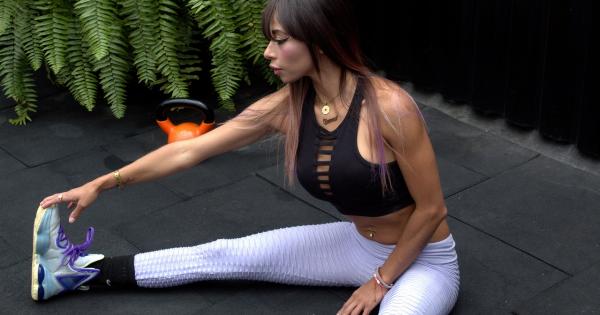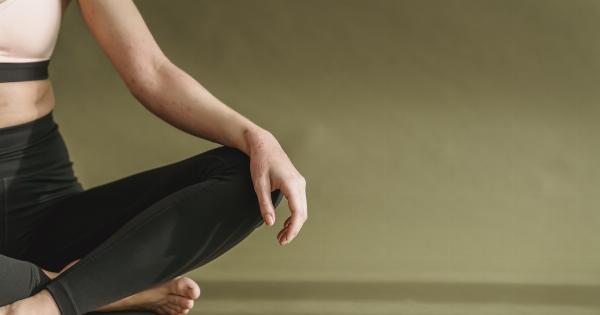Do you often find it difficult to perform your morning gymnastics routine due to tight muscles? Does muscle stiffness and limited flexibility hinder your progress and prevent you from achieving the desired results? If so, you’re not alone.
Many individuals struggle with tight muscles, which can impede their athletic performance and overall fitness goals.
Tight muscles occur when the muscle fibers contract and are unable to relax fully. This condition may be a result of various factors, including inadequate warm-up, excessive physical activity, poor posture, muscle imbalances, or even stress and anxiety.
Regardless of the cause, tight muscles can significantly hinder your gymnastics routine and make it challenging to perform at your best.
The negative impact of tight muscles on your gymnastics routine
Tight muscles can have several negative effects on your morning gymnastics routine. Understanding these impacts can help you take the necessary steps to alleviate muscle tension and enhance your overall performance.
Here’s how tight muscles can impede your gymnastics practice:.
1. Decreased range of motion
Tight muscles limit your range of motion, making it harder to execute complex gymnastics movements. Flexible muscles are key to performing various routines, such as splits, handstands, and backflips.
When your muscles are tight, they resist lengthening, thereby restricting your range of motion and preventing you from achieving optimal flexibility.
2. Increased risk of injury
Tight muscles are more prone to injury as they lack elasticity. When you attempt challenging gymnastics moves or sudden movements, tight muscles are unable to stretch as needed, which can lead to muscle strains, tears, or sprains.
This increased risk of injury can set you back in your training and potentially cause long-term damage if not addressed promptly.
3. Decreased strength and power
Tight muscles can restrict blood flow and oxygen supply to the muscle fibers, resulting in decreased strength and power.
When your muscles are not adequately relaxed and flexible, they cannot generate maximum force during dynamic movements required in gymnastics routines. Limited power can hinder your ability to achieve explosive jumps, flips, and other high-intensity maneuvers.
4. Impaired balance and coordination
Tight muscles can disrupt your sense of balance and coordination. When your muscles are tight and inflexible, they interfere with the proprioceptive feedback system, which relies on muscle flexibility and joint mobility for proper functioning.
This disruption can make it challenging to maintain stability, execute precise movements, and achieve the required body control during your gymnastics routine.
Alleviating tight muscles for an improved morning gymnastics routine
While tight muscles can undoubtedly be a hindrance, the good news is that there are various effective strategies to alleviate muscle tension and enhance flexibility.
Incorporating these practices into your daily routine can help prepare your muscles for gymnastics training, improve your overall performance, and reduce the risk of injuries. Here are some ways to alleviate tight muscles:.
1. Regular stretching exercises
Stretching exercises play a crucial role in relieving muscle tension and improving flexibility. Incorporate both static and dynamic stretches into your warm-up routine before starting your gymnastics practice.
Focus on stretching all major muscle groups, paying special attention to areas that tend to be tighter, such as hamstrings, hips, and shoulders. Remember to hold each stretch for 15-30 seconds without bouncing or forcing the movement.
2. Foam rolling
Foam rolling, also known as self-myofascial release, is a self-massage technique that uses a foam roller to target specific muscle groups.
By applying pressure to tight areas, foam rolling helps release muscle knots and trigger points, providing relief and promoting muscle relaxation. Include foam rolling exercises as part of your cool-down routine after each gymnastics session to aid in muscle recovery and reduce post-workout soreness.
3. Deep tissue massage
A deep tissue massage performed by a professional therapist can be highly beneficial in alleviating tight muscles. The therapist uses firm pressure and slow strokes to reach deeper layers of muscle, releasing tension and improving blood circulation.
Regular deep tissue massages can help enhance muscle flexibility, reduce muscle stiffness, and aid in overall muscle recovery.
4. Incorporating yoga or Pilates
Practicing yoga or Pilates can significantly contribute to releasing muscle tension and improving flexibility. Both disciplines focus on stretching, strengthening, and controlling movements through various poses and exercises.
Yoga and Pilates can help increase muscle flexibility, improve body awareness, and promote relaxation, all of which are essential for a successful gymnastics routine.
5. Gradual muscle relaxation techniques
Incorporate gradual muscle relaxation techniques into your daily routine to alleviate muscle tension.
Techniques such as progressive muscle relaxation involve tensing and releasing specific muscle groups one by one, promoting overall muscle relaxation and reducing tightness. Engaging in these techniques before bedtime or as part of a mindfulness practice can contribute to better muscle flexibility and overall athletic performance.
6. Optimal hydration and nutrition
Proper hydration and adequate nutrition play a crucial role in maintaining muscle health and flexibility. Keep yourself well-hydrated throughout the day, especially during training sessions, to prevent muscle cramps and stiffness.
Additionally, ensure your diet provides sufficient nutrients, including protein, vitamins, and minerals, to support muscle recovery and repair, promoting overall muscle flexibility.
7. Regular rest and recovery
Rest and recovery are essential for preventing muscle tightness and maximizing performance. Allow your body sufficient time to rest between intense gymnastics sessions, ensuring you incorporate rest days into your training schedule.
During rest periods, the muscles have time to repair and rebuild, reducing the risk of tightness and improving muscle flexibility.
8. Flexibility training
Incorporate dedicated flexibility training into your regular gymnastics routine. Include exercises that target specific muscle groups and focus on increasing range of motion, such as splits, bridges, and shoulder stretches.
Consistent flexibility training over time can lead to significant improvements in muscle flexibility and help unlock new gymnastics skills.
9. Active warm-up exercises
Performing an active warm-up routine before your gymnastics practice is crucial for preparing your muscles for the required movements.
Engage in dynamic exercises, such as jogging, jumping jacks, and high knees, to increase blood flow and warm-up your muscles. Gradually progress to sport-specific movements and stretches to further loosen tight muscles and enhance flexibility.
10. Seek professional guidance
If you’re struggling with persistent muscle tightness despite your efforts, consider seeking guidance from a professional, such as a physical therapist or a sports trainer.
These experts can evaluate your individual condition, provide personalized stretching and strengthening exercises, and offer targeted solutions to specifically address your tight muscles.
Conclusion
Tight muscles can be a significant obstacle to your morning gymnastics routine.
However, with dedication and the implementation of the strategies mentioned above, you can gradually alleviate muscle tension, enhance flexibility, and optimize your overall performance. Make sure to incorporate regular stretching, foam rolling, and deep tissue massages into your routine, and consider yoga or Pilates for long-term flexibility improvements.
Remember, taking care of your muscles is essential for achieving your gymnastics goals while preventing injuries and enjoying a successful training journey.





























